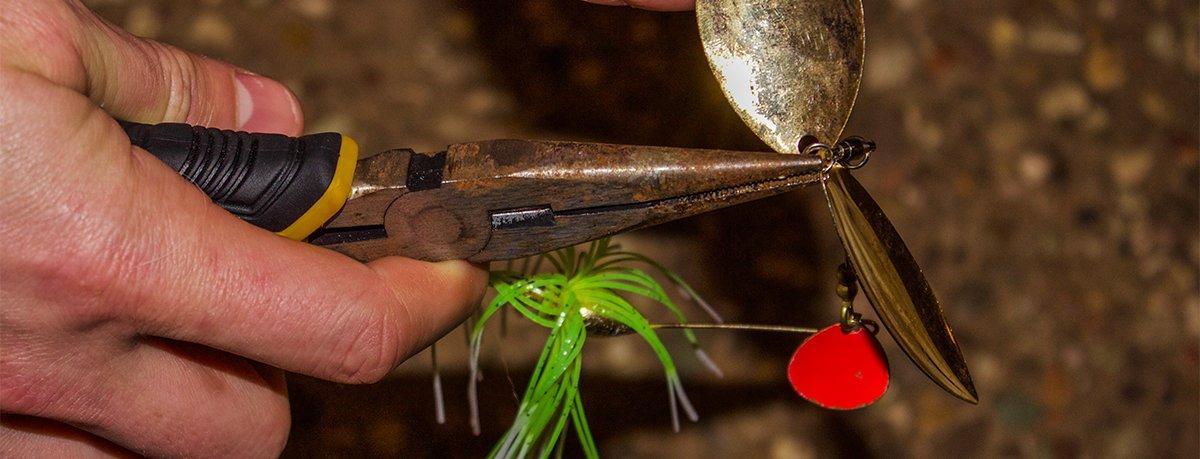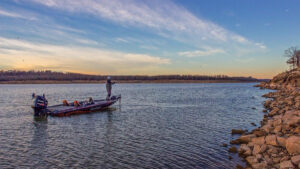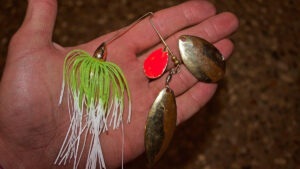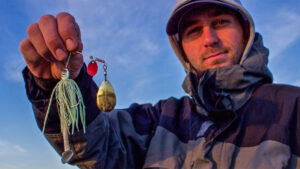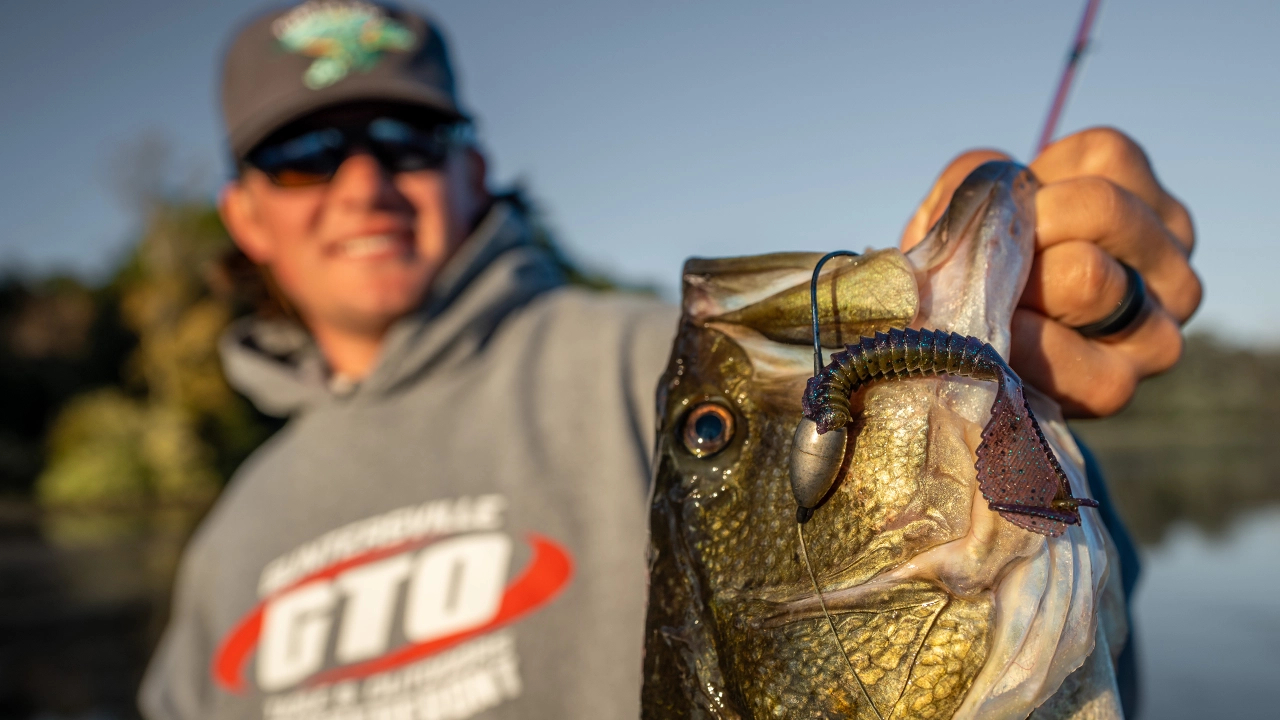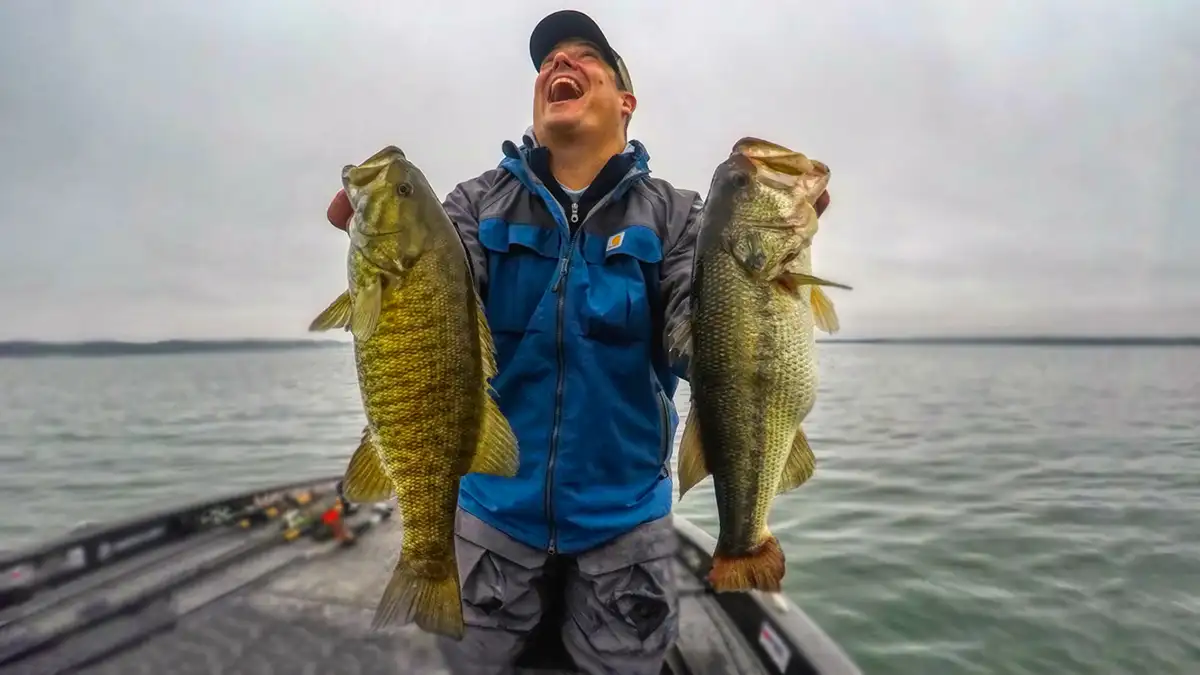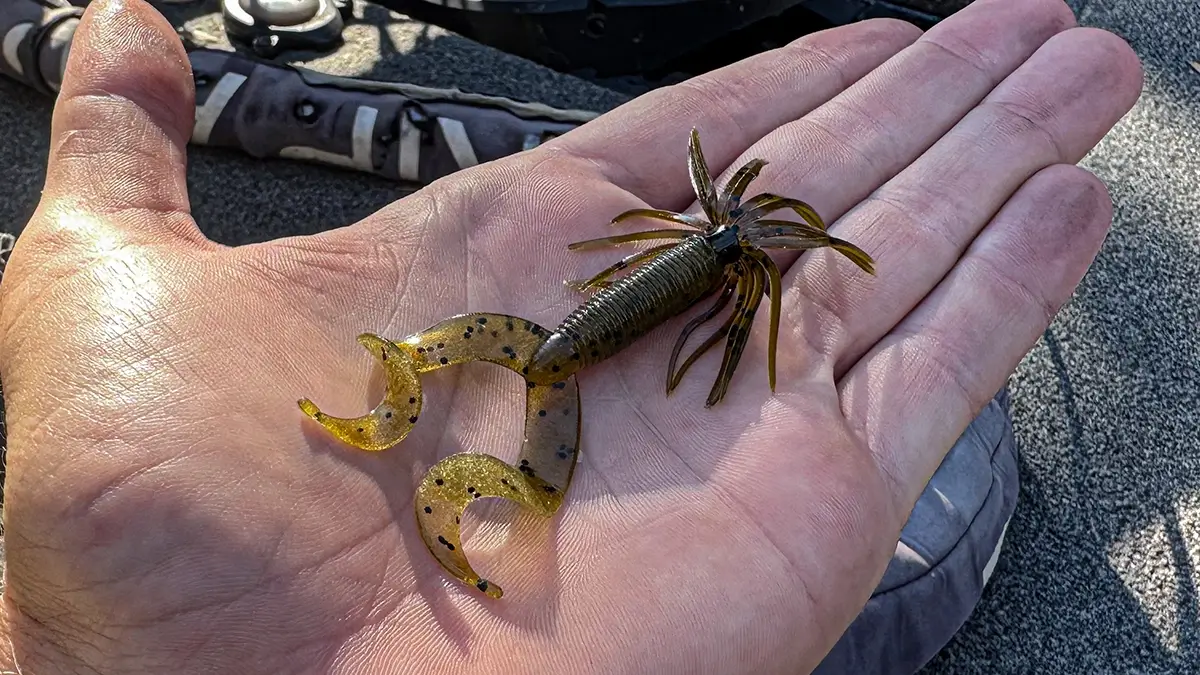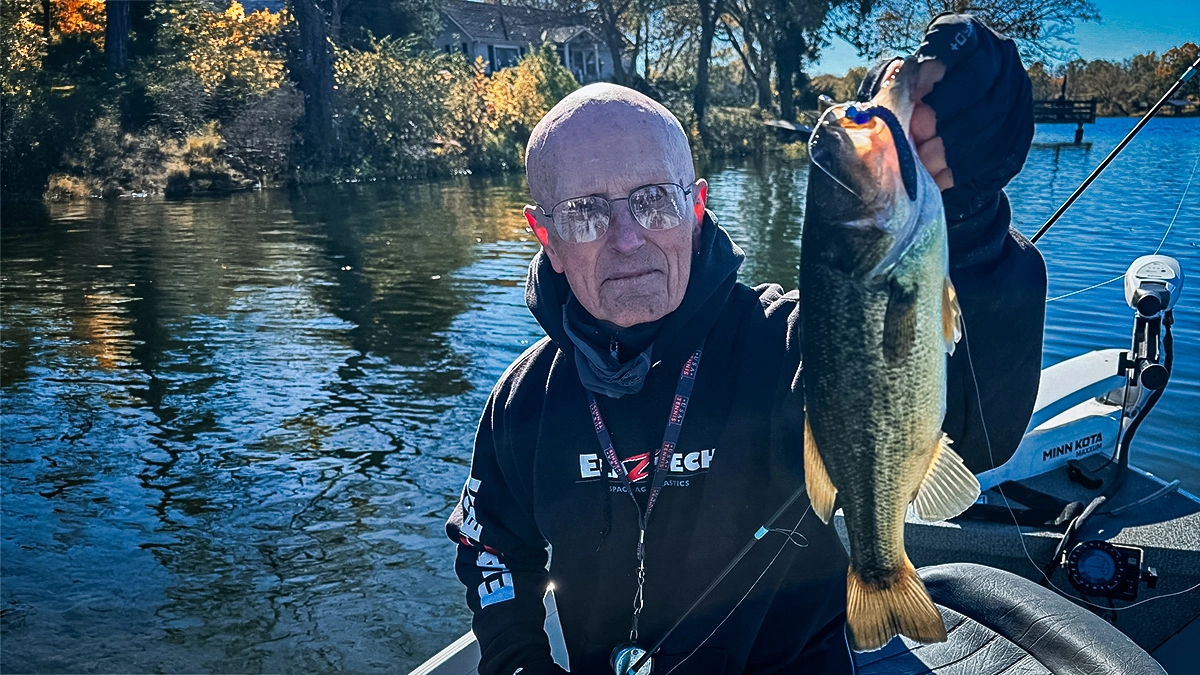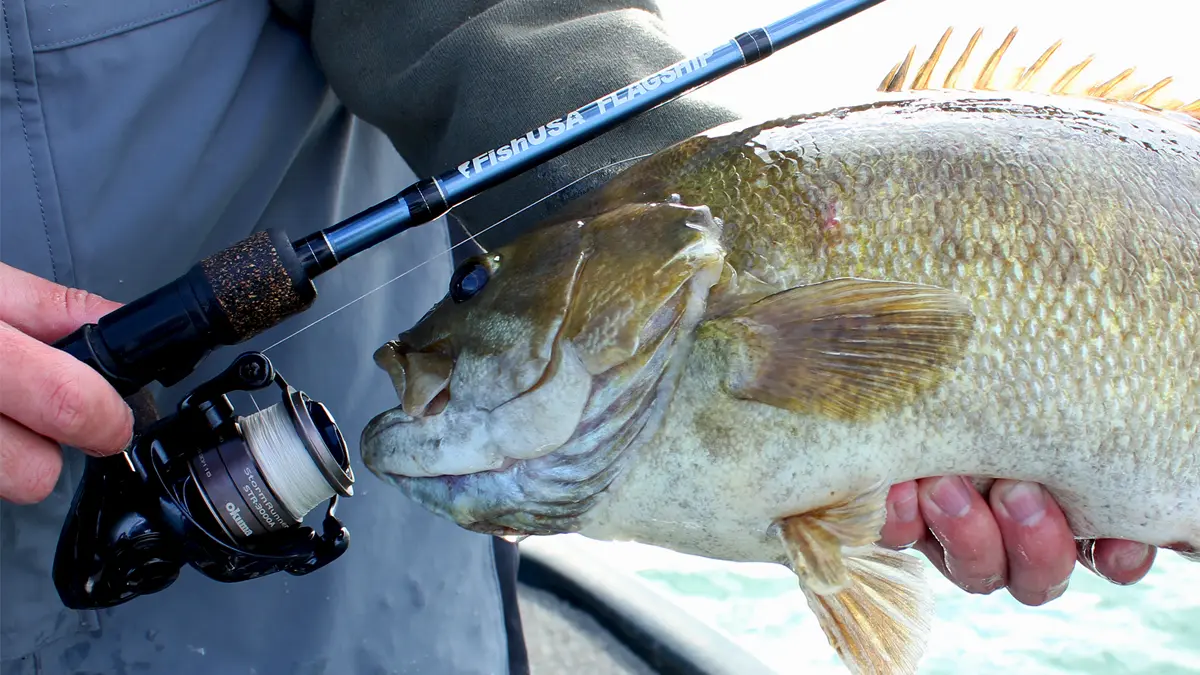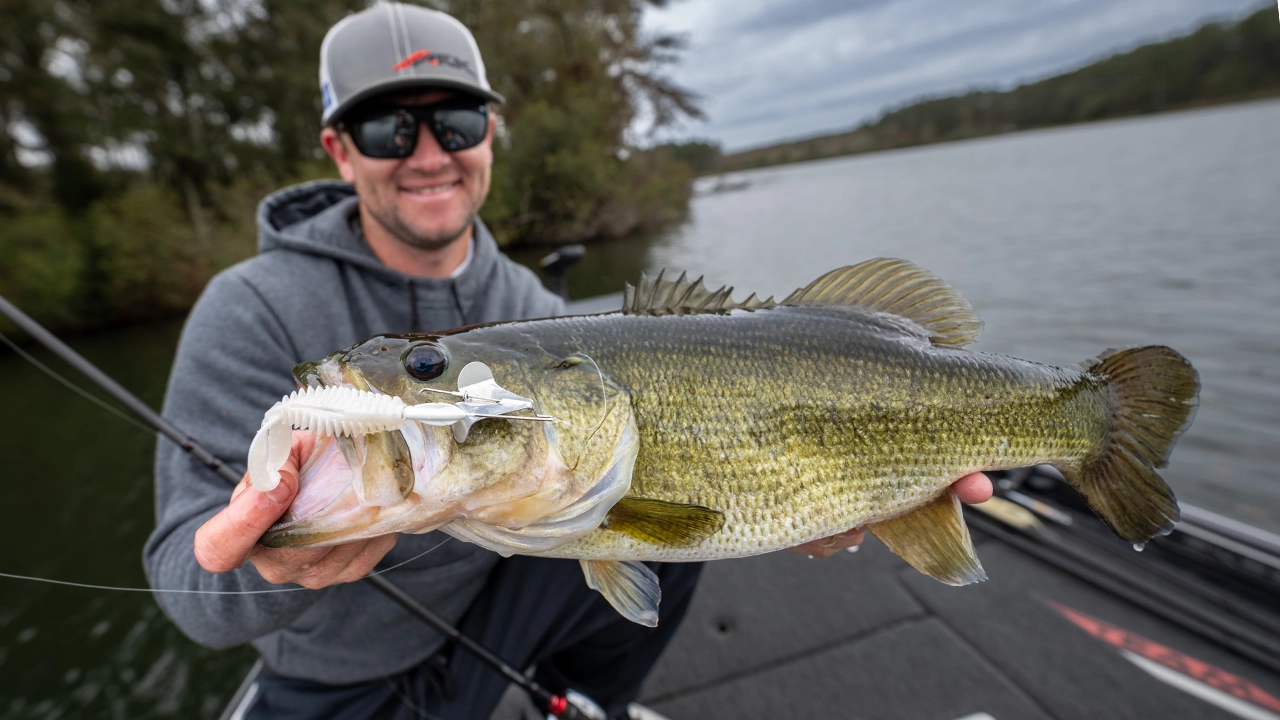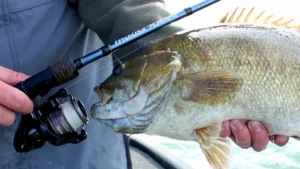Bass fishing spinnerbaits are one of the most tried and true bass fishing lures in existence. Because they’re traditionally associated with spring or fall fishing, a lot of us forget about this lure in the winter.
With the proper modifications, however, these lures can be highly effective throughout the colder months. Chad Warren, an Oklahoma native and 2017 FLW Tour rookie, has spent most of his life learning the various nuances of cold-water spinnerbait fishing.
He believes there are three key spinnerbait tweaks that will increase the quantity and quality of your early season catch.
No. 1: Lighten up and slow down
Warren takes a different approach than many spinnerbait anglers by employing a lightweight 3/8-ounce spinnerbait in the cold water.?
“As the water cools off, bass will typically move a little deeper to avoid the elements,” Warren said. “A lot of guys use a heavy spinnerbait to get their lure down to the fish, but I take the opposite approach by using a lighter spinnerbait and slowing my retrieve down to stay in the same strike zone.”
Warren focuses his winter spinnerbaiting efforts primarily on wood cover that has close, if not immediate, access to deep water; essentially the same type of places an angler would employ a big, heavy spinnerbait. Warren believes using a lighter lure and slowing his offering down to a crawl results in more bites.
No. 2: Change the blades
Warren also pays special attention to the type and color of his spinnerbait blades.
“I immediately change the front blade to a slightly larger Colorado or Indiana blade,” Warren said. “By upsizing the front blade I am going to get a lot more vibration out of my lure. Not only will this help the bass feel the bait, this also allows me to use an incredibly slow retrieve while keeping the bait off the bottom and in the strike zone.”
A spinnerbait is Warren’s go-to wintertime bait only if the water is dirty or has some color to it. For this reason, his front blade is always gold in order to help bass see the lure. Warren takes a different approach for his kicker blade, however.
“I’ll add a small orange or red Colorado kicker blade to my bait,” Warren said. “An off-color kicker blade gives the lure a different look underwater that helps fish zone in on it when the water is dirty. And for whatever reason, orange and red kicker blades out-produce other colors for me when the water temperatures drop below 55 degrees.”
No. 3: Add a trailer
“The last step is adding a Gene Larew Sweet Swimmer,” Warren said. “Adding this small plastic swimbait trailer helps add a little bulk and profile to my lure without overpowering my spinnerbait. More importantly, the paddletail of the trailer allows me to slow my retrieve down even more, while giving off a little extra thump.”
Warren says the speed of a spinnerbait—or any reaction lure, for that matter—is an incredibly important factor when bass fishing frigid water.
“I want to show them something moving slow,” Warren said. “That doesn’t mean you can’t catch them on reaction lures, because you can. Just think of bass like they are people. If I’m outside freezing and shoveling snow off the driveway and you want me to play catch, there’s a zero percent chance of me running a long ways to catch a ball. But if you threw it right to me, I’d still grab it. That’s how I envision bass in the wintertime.”
Heed Warren’s spinnerbait advice if you’re faced with stained to dirty water this winter and into the spring. Slow-rolling a lightweight spinnerbait may take a boatload of patience, but the reward is worth the wait. Also, see our article on the best spinnerbaits for bass.


